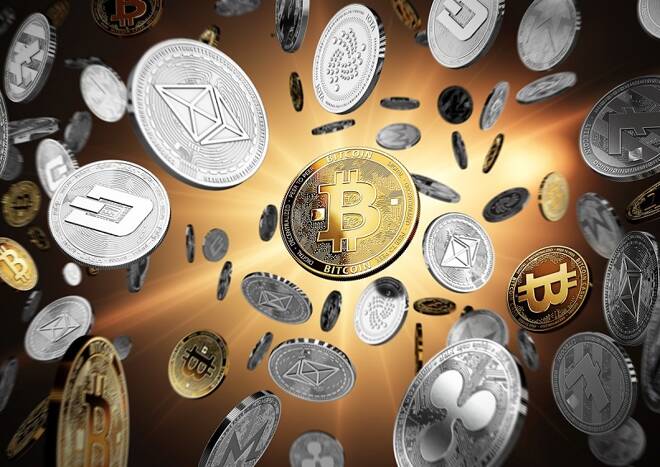Advertisement
Advertisement
Stablecoins – The Landscape and the Outlook
By:
Stablecoins have been in expansion mode in recent years. Is this set to continue or can we expect some consolidation?
Stablecoins and the Cryptomarket
While the evolution of stablecoins has been a gradual one, the number of stablecoins in existence has been on rapid rise of late. As the likes of Bitcoin and Ripple’s XRP bounce around, the stablecoin has provided investors with a far less risky exposure to the cryptomarket.
There are an array of stablecoins, some of which are fully collateralized by either fiat currency or commodity or other. There are others, however, that are partially collateralized to an asset class and some that are uncollateralized.
The very fact that stablecoins are a crypto mirror image of more traditional asset classes and financial products means that those without access to the banking world can explore exposure through the cryptomarket.
This can’t be a bad thing for the cryptomarket. After all, offering coins that have similar exposure to political and economic risk rather than whether they will be offered on an exchange is likely to have greater longevity.
As for the regulatory environment, investors exposed to fully collateralized coins will likely benefit from the regulatory oversight that is enjoyed across the more mature asset classes. That’s another positive.
Too Many Stablecoins?
As was the case during the dot.com era and even in the cryptomarket over the last few years, it has become more commonplace for an asset class to become flooded with viable investment alternatives packed with slightly different wrapping.
We can expect the environment to change as Darwinism takes hold. Only the fittest will survive and the rest will fall by the wayside. This can only be positive for the cryptomarket. While barriers to entry are low, those developing stablecoins will have the ability to be far more creative. Evolving and moving away from the more mature asset classes, whilst offering like for like on the volatility scale would make the cryptomarket a far more viable alternative investment strategy.
Tether: Can it Stay on Top?
Tether was an early entrant as a stablecoin. As history has proven, first entries tend to pave the way for the longer lasting alternatives. New entrants may well benefit from the hindsight of such teams as the Tether team. Tweaks here and there and Tether’s competitor may well become a more formidable alternative to fiat currency itself. Tether has faced a number of issues and the next true alternative will need to have a clean track record. We are likely to see a number of these roll out, which may ultimately cater to regional preferences.
In the end, can there be one single global standard stablecoin? Unlikely, as that would ultimately defy the very principle of the cryptomarket, decentralization.
Stablecoins: The Attributes
Key to the success of a stablecoin is in its name. First and foremost, they need to deliver stability and do exactly what they say on the package…
For now, stablecoins may soften the volatility that some crypto investors crave for. It may only be a matter of time before the market environment changes.
Today’s positives may well become tomorrow’s negatives. The cryptomarket was created to deliver a financial asset class that takes governments and central banks out of the equation. Stablecoins fail to deliver that.
Until then, however, using a stablecoin as an alternative to fiat currency makes perfect sense. Buying Bitcoin at $19,000 to buy a house, only to see its value fall to $3,000 ahead of the purchase is of no benefit to anyone. Well, except for the seller, maybe.
Facebook, Stablecoins and the Global Economy
While Facebook has had plenty of bad press in the recent past, there is no denying its global reach. The creation of a Facebook stablecoin makes perfect sense. When considering the ad revenues, etc. that Facebook Inc. is able to generate and the user base, Facebook’s stablecoin will likely be a standard for the FINTEC market as a whole. There’s e-bay, Amazon.inc, Netflix, Google, Alphabet and more and that’s before considering mobile operators.
Nakamoto Satoshi may not have envisaged the cryptomarket to evolve this way, but this avenue could really become a mainstream competitor to fiat money.
About the Author
Bob Masonauthor
With over 28 years of experience in the financial industry, Bob has worked with various global rating agencies and multinational banks. Currently he is covering currencies, commodities, alternative asset classes and global equities, focusing mostly on European and Asian markets.
Advertisement
